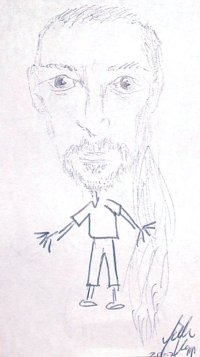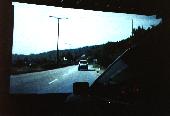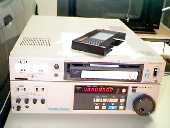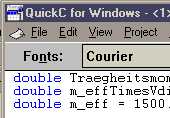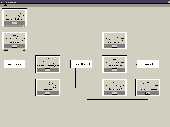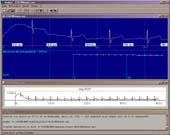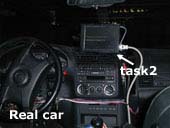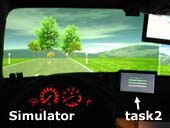- Knoke, M. & Piechulla, W. (2011).
Lückenlose Verfolgung. Identifikation von Stahlprodukten mit Ocr-Systemen.
Qualität und Zuverlässigkeit. Jahrgang 56 (2011) 2
- Lippold, Ch., Schulz, R., Krüger, H.-P., Scheuchenpflug, R., & Piechulla, W. (2007).
Orientierungssichtweite - Definition und Beurteilung. Forschung Straßenbau und Straßenverkehrstechnik,
Heft 977. Bremerhaven: Wirtschaftsverlag NW.
[Available via Online Bookshop]
- Piechulla, W. (2006). Messung und Kontrolle mentaler Fahrerbeanspruchung. In U.W. Ebner-Priemer (Hrsg.).
Ambulantes psychophysiologisches Monitoring - neue Perspektiven und Anwendungen. (S. 21-51). Frankfurt a.M.: Lang.
[Available via Online Bookshop]
- W. Piechulla, Y. Körner, S. Hoffmann, B. Merz, M. Naumann, H.-P. Krüger (2004).
Fahrtauglichkeitsdiagnostik bei M. Parkinson mit Trackingaufgaben?
Aktuelle Neurologie, 31, (Suppl. 1): P428.
Poster download.
- Piechulla, W. (2004). Ambulantes Psychophysiologisches Monitoring im Straßenverkehr. DGPs
2004 44. Kongress der Deutschen Gesellschaft für Psychologie.
Arbeitsgruppe · VG 413(1238 - 402).
Extended abstract download.
- Williams, M., Stefani, O. & Piechulla, W. (2004).
Vollständig virtuelle Fahrsimulation für
ergonomische Beurteilungen und Trainigszwecke. In Gesellschaft für Arbeitswissenschaft e.V. Arbeit
+ Gesundheit in effizienten Arbeitssystemen. Bericht zum 50. Kongress der GfA in Zürich, 24.-26. März 2004
(S. 623-626). Dortmund: GfA-Press.
- Piechulla, W., Mayser, C., Gehrke, H., & König, W. (2003).
Reducing drivers' mental workload by means of an adaptive man-machine interface.
Transportation Research Part F, 6, 233-248 (doi:10.1016/j.trf.2003.08.001).
Manuscript download.
- Mayser, C., Piechulla, W., Weiss, K.-E., & König, W. (2003).
Driver workload monitoring. In H. Strasser, K. Kluth,
H. Rausch, & H. Bubb (Eds.). Quality of Work and Products in Enterprises of the Future. Proceedings of the
50th-Anniversary Conference of the GfA and the XVII Annual ISOES Conference in Munich, May 07th-09th, 2003 (pp. 41-44).
Stuttgart: Ergonomia.
- Piechulla, W., Mayser, C., Gehrke, H. & König, W. (2002).
Echtzeit-Fahrerbeanspruchungsschätzung.
In R. Hammwöhner, C. Wolff &
C. Womser-Hacker (Hrsg.). Information und Mobilität. Proceedings des
8. Internationalen
Symposiums für Informationswissenschaft, 8.-10.10.2002 (S. 365-368).
Konstanz: UVK.
- Piechulla, W., Mayser, C., Gehrke, H. & König, W. (2002).
Online-Fahrerbeanspruchungsschätzung.
38. BDP-Kongress für
Verkehrspsychologie. Regensburg, 12.-14.09.2002
- Piechulla, W., Peißner, M., Werse, J. & Zimmer, A. (2001).
Diagnose von Fahrerzuständen
mittels Fahrverhalten. In F. Lehner, K. J. Schäfer (Hrsg.).
Dokumentation zum Informationstag 2001 Mobile Computing.
Bericht Nr. 56, Universität Regensburg,
Schriftenreihe des Lehrstuhls für Wirtschaftsinformatik III, ISBN 3-932345-76-2
- Krauss, M., Scheuchenpflug, R., Piechulla, W. & Zimmer, A. (2001).
Measurement of presence
in virtual environments. In A.C. Zimmer, K. Lange et al. (Hrsg.). Experimentelle
Psychologie im Spannungsfeld von Grundlagenforschung und Anwendung. Proceedings
43. Tagung experimentell arbeitender Psychologen (CD-ROM). Regensburg:
Universitätsbibliothek. ISBN: 3-88246-225-6
- Kostka, M., Dahmen-Zimmer, K., Piechulla, W. & Zimmer, A. (2001).
Fehlerbeobachtung
durch Experten. Eine Methode zur Evaluierung von Belastung und Ablenkung des Fahrers. In A.C.
Zimmer, K. Lange et al. (Hrsg.). Experimentelle Psychologie im Spannungsfeld von
Grundlagenforschung und Anwendung. Proceedings 43. Tagung experimentell arbeitender
Psychologen (CD-ROM). Regensburg: Universitätsbibliothek. ISBN: 3-88246-225-6
- Eichinger, A., Piechulla, W. & Zimmer, A. (1999). Entwicklung einer
multimedialen Unterstützung der Studienorganisation. In F. Lehner,
G. Braungart & L. Hitzenberger (Hrsg.). Multimedia. Informationssysteme
zwischen Bild und Sprache. (S. 69-78). Wiesbaden: Dt. Univ.-Verl.
- Dahmen-Zimmer, K., Zimmer, A., Körndle, H., Bengler, K., Karsten,
M., Wagenpfeil, T., Gatt, I., Flessa, S.; Ehrl, K. & Piechulla, W.
(1997). Situationsbezogene Sicherheitskenngrößen im Straßenverkehr.
Berichte der Bundesanstalt für Straßenwesen. Mensch und
Sicherheit. Heft M 78. Bremerhaven: Wirtschaftsverlag NW.
|










